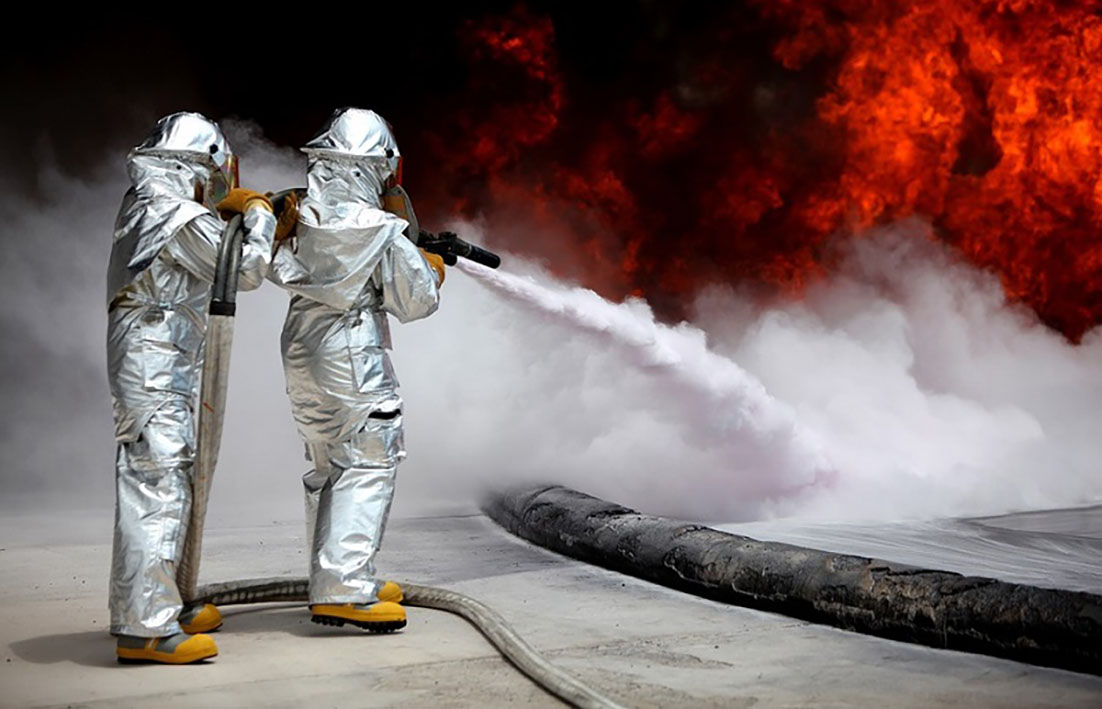
THREE PFAS chemicals found in firefighting foams once used at Pearce airbase and responsible for contaminating some West Bullsbrook water bores will be banned or have their use severely restricted by the federal government this year.
There are many types of per- and poly-fluoroalkyl substances (PFAS) but perfluorooctane sulfonate (PFOS), perfluorooctanoic acid (PFOA) and perfluorohexane sulfonate (PFHxS) are the best known.
The state government said firefighting foam containing the three chemicals was used to fight fires and for firefighting training in WA from the 1970s to the mid-2000s.
In 2018 a Department of Defence PFAS investigation ecological risk assessment report said PFAS exceeding the guidelines in the PFAS national environmental management plan (NEMP 2018) had been found in soil and water in a fire training area and former fire training area at Pearce airbase and within Ki-It Monger Brook and Ellen Brook, including Ellen Brook nature reserve and Twin Swamps nature reserve, which are home to the critically endangered western swamp tortoise.
After a site investigation and human health assessment Defence in 2018 told West Bullsbrook residents that PFAS had been detected above drinking water guidelines at some properties and that drinking their bore water was an elevated exposure risk.
In July 2019 Defence said out of 164 residential bores sampled for PFAS, 26 had detections above the limit of reporting.
The majority of properties did not have PFAS impacted bores but Defence was unable to guarantee those properties would not in the future be affected by PFAS.
Defence continued supplying properties with alternative water and also started examining long term options for the supply of water to properties in the PFAS management area.
A 2018 fact sheet also said soil and water within some areas of the base had been identified as posing an elevated risk of PFAS exposure to base workers during intrusive ground works.
“Management measures will be put in place to ensure that exposure does not exceed the relevant guidance values,’’ the fact sheet said.
On Wednesday federal Environment and Water Minister Tanya Pilbersek said by the end of this year, nine toxic chemical groups listed on the Stockholm Convention including PFOA, PFOS and PFHxS would be listed on the government’s industrial chemicals environmental management standard.
“This means that the import, use and manufacture of more than 500 chemicals that are harmful to the environment will be banned or severely restricted,’’ she said.
Defence said it provided notice to the Parliamentary Standing Committee on Public Works on September 4 and has received committee approval for the Bullsbrook water scheme works to proceed.
Earlier this year the National Toxics Network (NTN) said PFAS were used in a wide range of consumer and building products, including plastics, carpets, textiles, clothing, non-stick cookware, paints, and coatings, make up/mascara, dental floss, waxes and food packaging (moulded fibre, paper bags).
NTN said PFAS national environmental management plan V3 makes no recommendations for restrictions or bans on PFAS in consumer and industrial products and ignores the impact of fluorinated pesticides despite their ubiquitous use throughout the Australian environment.
Forty residential groundwater bores are sampled as a part of the ongoing monitoring program, and as of September 2023, Defence has completed ad-hoc groundwater bore sampling at 20 residential properties and supplied bottled water to 94 residential properties.